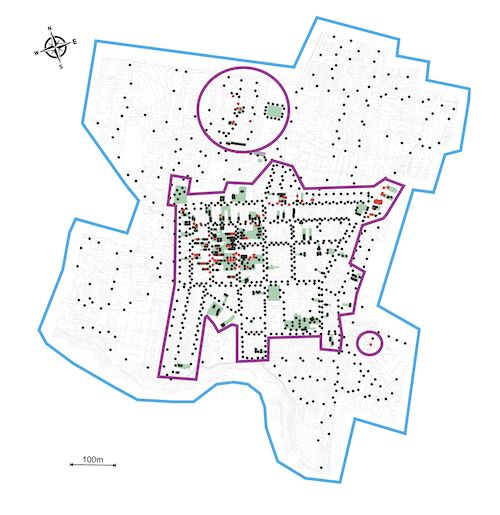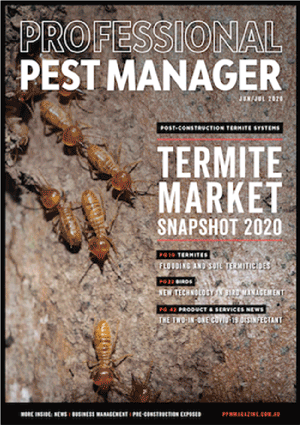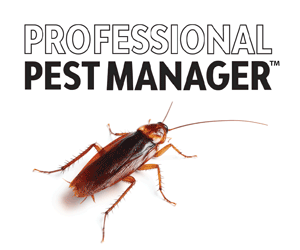A team of Spanish researchers have successfully conducted an area-wide elimination of termites, as outlined in their research paper published in the Journal of Economic Entomology.
When managing termites for a single property, pest managers often talk about reducing the ‘termite pressure’ on the property. What this really means, is colony elimination. By eliminating the colony or colonies attacking a property, some of which could be large, mature colonies, the termite population in the area surrounding the property – the termite pressure – is significantly reduced. Often it can be suppressed for a significant period of time, sometimes many years, as it takes time for new colonies to establish and mature to a level where they become a significant threat to the property.
Other than locating and destroying a nest directly (which is not possible for many species), termite baiting is the only proven method of reliably achieving colony elimination. With termite baiting a strategy for eliminating termites from a property, why couldn’t it be used to eliminate termites from a neighbourhood or even a whole town?
Area-wide elimination has been attempted previously, mainly in the US, both on Reticulitermes spp. in California and Coptotermes formosanus and R. flavipes in New Orleans. While these studies demonstrated a significant reduction in termite infestation, the termites were not eradicated. This was largely due to the nature of the sites and species present, which meant reinfestation occurred from neighbouring areas.
In Europe several attempts have been made at areawide eradication, in Italy, France and the UK, all involving Reticulitermes spp. Whilst delivering a significant reduction, none delivered 100% eradication. Given the general effectiveness of these treatments, the fact that 100% eradication was not achieved was believed to be due to some flaw in the protocol or management, rather than a lack of product efficacy.
A team of researchers have released the results of a long-term baiting program across five town centres in Spain, where Reticulitermes termites (main picture, above) were an issue.1 After completion of a five-year baiting program at each site, termite activity has been absent in treated areas for more than ten years. How was this area-wide elimination of termites achieved, when it was seemingly impossible in other locations?
The study was carried out in five town centres across the Iberian Peninsula. All but one of the town centres consisted of rectangular blocks of single-family houses, with very little green space in between. With the backing of local authorities, local pest control companies carried out treatments under the direction of David Mora, national technical manager at Anticimex Spain.

At each site it was first necessary to determine the infestation area. This was achieved through a combination of resident questionnaires and inspections, of both properties and trees. This determined the survey area, where in-ground monitoring bait stations (containing wood) were installed and above-ground bait stations were installed on areas of termite activity inside buildings. Active stations then had 0.5% hexaflumuron bait added, with the stations checked every 30-45 days, with more bait added if necessary. The area in which bait was added to the stations was called the treatment area. Elimination was confirmed when there was a total absence from the previously active bait stations, the building and surrounding trees, and confirmed when termites remained absent for six months (nine months if it included the cooler winter period). After 12 months of inactivity, bait was replaced with wood timbers for monitoring. The monitoring of in-ground stations then continued for five years.
The treatment areas in the five towns ranged from 23,000 – 170,500 m2, with between 37-195 buildings having termite activity. The eradication treatment used between 509-1,417 bait stations, with activity observed between 8-39% of stations, with colonies consuming between 58-190g of bait before elimination. Complete cessation of termite activity across the treated areas was observed between 7-16 months after the start of the treatment and with no activity detected for the remaining five years of the studies. The most recent of these five-year studies were completed by the end of 2015, but the earliest was completed at the end of 2009. However, feedback from local councils in 2022 confirmed that no new termite infestations had been detected, an observation confirmed in 2025, when four of the sites were surveyed by the research team.

The team concluded that area-wide termite elimination is possible, with treated areas remaining termite free for an extended period (years), at least for Reticulitermes spp. However, it is essential that good management is implemented – initial survey, ongoing inspections and monitoring, and installation of a sufficient density of bait stations.
The success of area-wide termite elimination techniques in other countries will depend on the species of termite present. Certainly, if there are species of termite present on which baits are less efficacious, for example termitids such as Nasutitermes spp., or fungus-growing species, such as Macrotermes spp., then eradication will take longer or may not be possible. Also, even for other species on which baits are very effective, such as Coptotermes spp., it can be difficult to achieve a termite-free zone for a long period of time when the arrival of winged termites from other areas is high and constant, and new colonies are constantly being formed.
Nevertheless, baiting will still deliver a significant reduction in termite pressure if implemented on an area-wide basis. Additionally, with the introduction of durable termite baits, which reduce the significant labour component of managing baiting systems, the economics of area-wide termite management programs become more attractive.
Article authors:
Dr David Hernández-Teixidor, Instituto de Productos Naturales y Agrobiología (IPNACSIC), Spanish National Research Council, La Laguna, Tenerife, Canary Islands, Spain
David Mora, Anticimex España, Barcelona, Spain
Dr Phil Ridley, Director, Professional Pest Manager
1 David Mora, David Hernández-Teixidor, Large-scale elimination of subterranean termite colonies of the genus Reticulitermes (Blattodea: Heterotermitidae) from town centers in Spain, Journal of Economic Entomology, 2025; toaf039, https://doi.org/10.1093/jee/toaf039


